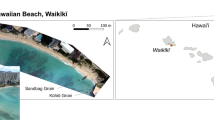Abstract
In environmental monitoring, environmental impact assessments and environmental audits, topographical maps play an essential role in providing a means by which the locations of sampling sites may be selected, in assisting with the interpretation of physical features, and in indicating the impact or potential impact on an area due to changes in the system being monitored (e.g., spatially changing features such as wetlands). Global Navigation Satellite Systems (GNSS) are hereby presented as a rapid method for monitoring spatial changes to support environmental monitoring decisions and policies. To validate the GNSS-based method, a comparison is made of results from a small-scale topographic survey using radio-based real-time kinematic GNSS (GNSS-RTK) and total station survey methods at Jack Finnery Lake, Perth, Australia. The accuracies achieved by the total station in this study were 2 cm horizontally and 6 cm vertically, while the GNSS-RTK also achieved an accuracy of 2 cm horizontally, but only 28 cm vertically. While the GNSS-RTK measurements were less accurate in the height component compared to those from the total station method, it is still capable of achieving accuracies sufficient for a topographic map at a scale of 1:1,750 that could support environmental monitoring tasks such as identifying spatial changes in small water bodies or wetlands. The time taken to perform the survey using GNSS-RTK, however, was much shorter compared to the total station method, thereby making it quite suitable for monitoring spatial changes within an environmental context, e.g., dynamic mining activities that require rapid surveys and the updating of the monitored data at regular intervals.
Similar content being viewed by others
References
Braun, J., Simões, C., Vogt, S., Bremer, U. F., Blindow, N., Pfender, M., et al. (2001). An improved topographic database for King George Island: Compilation, application and outlook. Antarctic Science, 13(1), 41–52.
El-Mowafy, A. (2000). Performance analysis of the RTK technique in an urban environment. The Australian Surveyor, 45(1), 47–54.
Featherstone, W. E., & Stewart, M. P. (2001). Combined analysis of real time kinematic GPS and its users for height determination. Journal of Surveying Engineering, 127(2), 31–51.
Fischer, C., & Spreckels, V. (1999). Environmental monitoring of coal mining subsidences by airborne high resolution scanner. IEEE, 0-7803-5207-6/99, 897– 899.
Garget, D. (2005). Testing of robotic total station for dynamic tracking. University of Southern Queensland. http://eprints.usq.edu.au/.
Gili, J. A., Corominas, J., & Rius, J. (2000). Using global positioning techniques in landslide monitoring. Engineering Geology, 155(3), 167–192.
Hall, B. (1994). Environmental mapping systems—locationally linked databases. Riversinfo. Precision Info. http://www.precisioninfo.com/rivers\_org/au/archive/?doc\_id=1.
Hendricks, D. M. (2004). Maps in environmental monitoring. In J. F. Artiola, I. L. Pepper, & M. L. Brusseau (Eds.), Environmental monitoring and characterization (pp. 410). California, USA: Elsevier.
Hoffman-Wellenhof, B., Lichtenegger, H., & Collins, J. (2001). Global positioning system: theory and practice (5th ed., pp. 382). New York: Springer.
Jacobs, P. G. (2005). Assessing GNSS-RTK for a suburban survey practice. University of Southern Queensland, Faculty of Engineering and Surveying. http://eprints.usq.edu.au/546/1/PeterJACOBS-2005.pdf.
Ji, C. Y. , Liu, Q., Sun, D., Wang, S., Lin, P., & Li, X. (2001). Monitoring urban expansion with remote sensing in China. International Journal of Remote Sensing, 22(8):1441–1455. doi:10.1080/01431160117207.
Kvamme, K., Ernenwein, E., & Markussen, C. (2006). Robotic total station for microtopographic mapping: an example from the northern great plains. Archaeological Prospection, 13, 91–102.
Lavine, A., Gardner, J., & Reneau, S. (2003). Total station geologic mapping: an innovative approach to annalyzing surface-faulting hazards. Engineering Geology, 70, 71–91.
Lemmon, T., & Gerdan, G. (1999). The influence of the number of satellites on the accuracy of GNSS-RTK positions. The Australian Surveyor, 44(1), 64–70.
Reynolds, W., Young, F., & Gibbings, P. (2005). A comparison of methods for mapping golf greens. Spatial Science Queensland, 4, 33–36.
Roberts, C. (2005). GPS for Cadastral surveying—practical considerations. Spatial Sciences Institute, September 2005, Melbourne.
Roberts, G., Meng, X., Taha, A., & Montillet, J. P. (2006). The location and positioning of buried pipes and cables in built up areas (pp. 1–9). Munich: TS 38—Engineering Surveys for Construction Works I, XXIII FIG Congress.
Schmidt, J. P., Taylor, R. K., & Gehl, R. J. (2003). Developing topographic maps using a sub-meter accuracy global positioning receiver. Applied Engineering in Agriculture, 19(3), 291–300.
Shalaby, A., & Tateishi, R. (2007). Remote sensing and GIS for mapping and monitoring land cover and land-use changes in the Northwestern coastal zone of Egypt. Applied Geography, 27, 28–41. doi:10.1016/j.apgeog.2006.09.004.
Sokkia (2009). GSR2700 ISX specifications. Sokkia, USA: POINT Inc.
Tokmakidis, K., Spatalas, S., & Pikridas, C. (2003). A comparison of a digital terrain model obtained from GPS and classical data (pp. 30–35). Sofia, Bulgaria: Proceedings of International Symposium on Modern Technologies, Education and Professional Practice in the Globalizing World, November.
Uren, J., & Price, W. F. (2010). Surveying for engineering (5th ed, pp. 824). New York: Palgrave MacMillan.
US Army Corps of Engineers (2007). Control and topographic surveying. Engineering and Design Manual, EM 1110-1-1005 (498 pp.).
Author information
Authors and Affiliations
Corresponding author
Rights and permissions
About this article
Cite this article
Schloderer, G., Bingham, M., Awange, J.L. et al. Application of GNSS-RTK derived topographical maps for rapid environmental monitoring: a case study of Jack Finnery Lake (Perth, Australia). Environ Monit Assess 180, 147–161 (2011). https://doi.org/10.1007/s10661-010-1778-8
Received:
Accepted:
Published:
Issue Date:
DOI: https://doi.org/10.1007/s10661-010-1778-8




